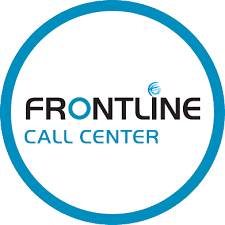The 4 Phases of Succession Planning
In business, as in life, change is the only constant. Every enterprise, regardless of its scale or industry, will face the prospect of leadership transition, and in the dynamic world of business, continuity, and planning are essential. Whether you’re an established business magnate or a budding entrepreneur, understanding the phases of succession planning ensures that your company’s legacy is secure. That’s where the importance of succession planning comes in. This meticulous process not only preserves the essence and legacy of a business but also ensures its vitality in the years to come. This article delves into the intricacies of succession planning, from setting your objectives to ensuring your business thrives after your exit.
Phase 1: Setting the Foundation – Owner Objectives and Exit Goals
Why are you exiting? More than just a question, the reason often reflects an owner’s journey. Some might leave due to age or health constraints, others because of shifts in the industry landscape, and some due to transformative family events. But beyond the reason lies the vision for what comes next.
The Exit Strategy: The exit can manifest in various forms depending on the motivations and objectives. Transferring leadership to a family member might be ideal for those who have built a family-run enterprise. On the other hand, selling the business internally to key employee(s) could suit those who believe in their team’s capabilities and have shown interest in being a business owner. For those who see the business purely as an asset, seeking an external seller or partnering with private equity may be the best route and can potentially maximize the returns on their investment.
Interestingly, the emotional connection to the business often dictates this choice. For a business owner whose life revolves around their enterprise, the emphasis might be on preserving a legacy. In contrast, someone with a more detached view, like a franchise owner, might lean toward maximizing immediate financial value.
Phase 2: Pacing the Process – The 3-5 Year Runway
The Wisdom of Timing: A well-calibrated exit is a harmonious blend of intuition and strategy. Without proper foresight, businesses risk devaluation, often succumbing to distressed sales. A 3-5-year runway isn’t just a buffer but a strategic window. It allows businesses to navigate market fluctuations, adapt to economic shifts, and refine their operational framework.
Furthermore, this span encapsulates a business cycle – a growth phase, peak, decline, and recovery phase. Prospective owners will likely want to see the last 5 years of financial records. A well-timed exit strategy ensures that businesses aren’t leaving money on the table and are passing on an enterprise with clean financial records and an optimistic future trajectory.
Phase 3: The Worth of Your Legacy – Determining Business Value
- Income-Based Valuation: This approach values the business based on its recurring or future cash flow. EBITDA, or earnings before interest, taxes, depreciation, and amortization, is a common metric that reflects the company’s earning capacity.
- Asset-Based Valuation: This approach is particularly relevant for businesses heavily invested in infrastructure, machinery, or technology. It’s a reminder that tangible assets hold significant value even if the business isn’t raking in profits.
- Market Approach: In some cases, the market is the best indicator of a business’s value. If a competitor or similar enterprise recently sold, it offers a ballpark figure, even if this approach is less frequent for private entities.
Sometimes, a combination of the three, weighted based on the relevance of each, offers the most accurate valuation. As the valuation becomes clear, it’s also a moment of introspection for business owners. It necessitates revisiting personal financial goals, like retirement plans, and assessing if the business’s value aligns with these ambitions so there is no value gap.
Phase 4: Fortifying Your Legacy – Maximizing and Protecting Value
Value isn’t static. It’s a dynamic metric, susceptible to risks. For forward-thinking business owners, the focus at this step is amplifying and safeguarding. Key strategies include:
- Management Autonomy: A business reliant solely on its owner is vulnerable. Ensuring the company is not solely dependent upon the business owner, that it can function seamlessly in their absence, and competent second-tier leadership in place boosts value and ensures continuity.
- Compliance & Diversification: In the ever-evolving landscape of regulations, compliance isn’t just mandatory; it’s a mark of credibility. Similarly, a diversified client base is an insurance against market volatility. Both minimize risks and ensure a more stable value for your business.
An Ode to Continuity and Legacy
Succession planning isn’t merely about exiting; it’s about securing your legacy, ensuring your business’s continued growth, and reaping the fruits of your years of hard work. Proper succession planning bridges the past’s legacy and the future’s promise. While the journey is intricate, with its share of challenges, it’s a testament to a leader’s vision and dedication. As you contemplate this journey, remember to align your personal goals with your business objectives, seek expert advice when in doubt, and always plan ahead.
Are you considering embarking on your succession planning journey? Let VSH be your trusted partner, guiding you through each phase, ensuring a smooth transition, and preserving your legacy.
Connect with us today! We have had the pleasure of assisting many local business’s transition and look forward to working with you!





